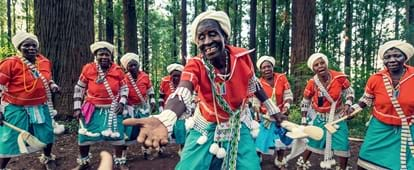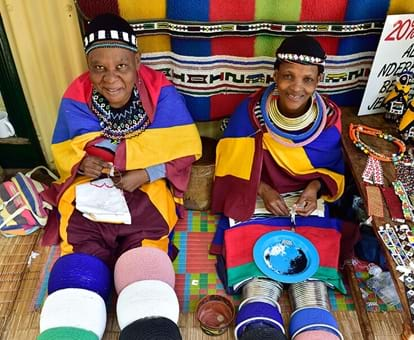The Basic Principles Of South African Culture Today
Table of ContentsThe Ultimate Guide To South African Culture TodayFacts About South African Culture Today UncoveredTop Guidelines Of South African Culture TodayTop Guidelines Of South African Culture TodayThe 4-Minute Rule for South African Culture TodayTop Guidelines Of South African Culture Today
An issue of value in Zambian towns is the passing away of liked ones. All members of the town placed cash, time and effort together for the burial of the deceased.Music and dance is a really crucial element of the Zambian culture. The numerous tribal devices have their own dancing types; however, makishi is usual amongst all people.
Not known Details About South African Culture Today
When it concerns music, drums are made use of one of the most, with a variety of drumming ceremonies. In Zambia, bulk of the people are Christian; Protestant and Roman Catholic. There are little groups of Muslims and Hindus, with the rest adhering to neighborhood indigenous tribal beliefs.

South African heritage and culture is profoundly diverse, and contains numerous different groups of people that each have their very own traditions and ideas. Having such a diversity of people and societies is what makes South Africa so distinct. In real feeling of the expression, we are a rainbow country.
South Africa has around three hundred thousand Portuguese individuals residing in it. Making it the 7th on the list of nations with the most Portuguese individuals in it outside of Portugal. Portuguese is not just a culture, yet it is likewise a language and a race. Portuguese individuals originate from the country of Portugal in Europe, nonetheless, due to Portugal (like several other nations in Europe) exploring the globe and conquering various other countries during the 15th 20th centuries, South Africa has what we call Portuguese South African's living in it.
Some Ideas on South African Culture Today You Need To Know
Among the popular features of the topography is a plateau that covers almost two thirds of the facility of the country. The plateau complex rises toward the southeast, where it climaxes in the Drakensberg range, part of an escarpment that separates the plateau from the coastal areas. The Drakensburg includes Champagne Castle, the greatest height in the nation.
The area north of the Witwatersrand, called the bushveld, inclines downward from eastern to west towards the Limpopo River, which develops the global boundary. The western area of the plateau, the middleveld, additionally descends towards the west and varies in elevation between the highveld and bushveld. In between the Drakensburg and the eastern and southerly coast, the land comes down to the sea.
Nearer the coast there is a low-lying plain called the eastern lowveld. Southwest of the plateau the country becomes gradually a lot more dry, paving the way to the hostile desert of the Great Karroo, bordered on the east by the lower, better watered plateau of the Little Karroo. Separating the completely dry southerly interior from the sandy littoral of the southerly shore and West Cape is another range, the Langeberg.
The Definitive Guide for South African Culture Today
The country's racially, ethnically, and politically separated background has generated nationwide and subnational symbols that still operate as icons of the country, and others signs that are approved only by particular groups. The monoliths to white settler conquest and political dominance, such as the Afrikaner Voortrekker ("leader") Monolith in Pretoria and the Rhodes Monument recognizing the British colonial empire builder and Cape prime priest Cecil Rhodes, remain sectarian signs.
The first contemporary inhabitants were the San ("bushman") hunter-gatherers and the Khoi ("Hottentot") peoples, that herded livestock (South African culture today). The San might have existed for hundreds of years and left evidence of their existence in hundreds of ancient cavern paints ("rock art"). Bantu-speaking clans that were the ancestors of the Nguni (today's amaZulu, amaXhosa, amaSwazi, and vaTsonga go to this website individuals) and Tswana-Sotho language teams (today's Batswana and Southern and Northern Basotho) migrated down from eastern Africa as early as the fifteenth century

Both former republics of the Orange Free State and Transvaal (South African Republic) were developed by Afrikaner inhabitants who defeated and dispossessed the Basotho and Batswana. Lesotho would certainly have been by force included right into the Orange Free State without the extension of British defense in 1869. The best unification of the nation arised from the South African Battle (18991902) in between the British and the 2 Afrikaner republics, which minimized the nation to wreck at the start of the twentieth century.
Afrikaners traditionally considered themselves the just true South Africans and, while giving full citizenship to all locals of European descent, denied that status to people of shade till the autonomous shift of 1994. British South Africans keep a sense of cultural and social connection to Great Britain without deteriorating their identification as South Africans.
Some Ideas on South African Culture Today You Need To Know
The variety and fragmentation within ethnic groupings and the equilibrium of tensions in between those groups during the twentieth century protected against interethnic civil dispute. While intergroup tensions over sources, entitlements, and political dominance continue to be, those conflicts are as most likely to pit Zulu versus Zulu as Zulu against Xhosa or African versus Afrikaner.
From colonial India, British vendors and administrators brought the rounded metal decorative roofings and slender shoelace work pillars that still exemplify the outdoor patios of cottages in the areas and cities throughout the country. Homes of prayer contribute a crucial building element also in the smallest communities. In enhancement to the soaring steeples and traditional stonework of Afrikaans Dutch Reformed churches, Anglican churches, synagogues, mosques, and Hindu temples offer selection to the spiritual building scene.

Slaughtering and the brewing of standard cereal beer are necessary in safeguarding the engagement and a good reputation of the forefathers that are considered the guardians of good luck, prosperity, and wellness. Indian neighborhoods keep their indigenous cooking practices and apply them on view it now Islamic and Hindu ritual and ritualistic occasions. Afrikaners and Coloured people gather at weekends and unique events at multifamily barbeques called braais, where community bonds are enhanced.
Because this was the main economic venture of both black Africans and white colonists, problem between those groups fixated the property of grazing land and livestock. In 1867, the largest ruby deposits worldwide were discovered at Kimberley in the west central location. The wealth from those areas helped fund the exploitation image source of the greatest gold coral reef in the world, which was discovered on the Witwatersrand in 1886.
South African Culture Today Things To Know Before You Buy
This caused misunderstandings and calculated misrepresentation in the ventures of white settlers and federal government officials with African principals during the early american duration (South African culture today). In the establishment of African gets, some elements of public and mainly "tribal depend on" land tenure were preserved, and also in white backwoods, kinds of public period were still practiced in locations with African areas
After the autonomous transformation of 1994, programs for land restitution, redistribution, and reform were instituted, but progression has been sluggish. The white minority still regulates eighty percent of the land. In the wake of farming land intrusions in Zimbabwe, the Department of Land Affairs has actually pledged to speed land redistribution.